There is something quite spectacular about big cats; the leopard, in particular, has always been one of my favorites. From its beautiful coat to its climbing and hunting abilities, it’s hard not to love this fearsome predator.
In this post, we will look further into the leopard, paying special attention to its behavior, characteristics, and the species’ habitats out in the wild. If you’re looking to learn more about leopards, keep reading, as we’ve got all the information you need!
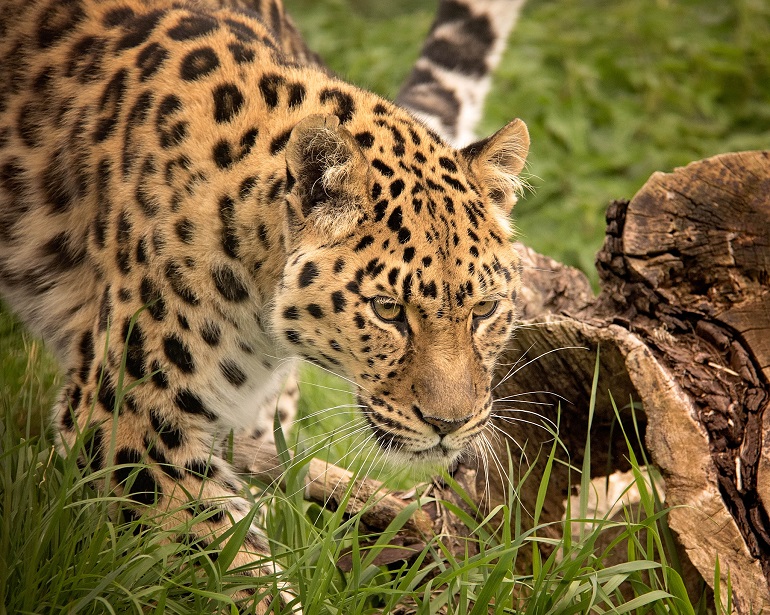
About The Leopard
The leopard (Panthera pardus) is part of the Felidae family, specifically the genus Panthera.
To date, there are only five species from the genus Panthera that still walk this earth, which includes the leopard, the lion, the tiger, the jaguar, and the snow leopard. Sadly the other 17 species and subspecies which were once a part of the group are now extinct.
German biologist Lorenz Oken 1816 was the one who categorized these big cats into the genus Panthera group; however, it was initially due to their spots.
Almost 100 years later, Reginal Innes Pocock, a British zoologist, revised the categorization, and now the genus Panthera consists of cats with common cranial features.
Leopards live in various spots throughout the world, including sub-Saharan Africa, Western and Central Asia, the Indian subcontinent, Southern Russia, and Southeast and East Asia.
And although its global range initially seems extensive, the leopard is thought to only occupy 25% of its historical range, with the species being locally extinct in 21 countries.
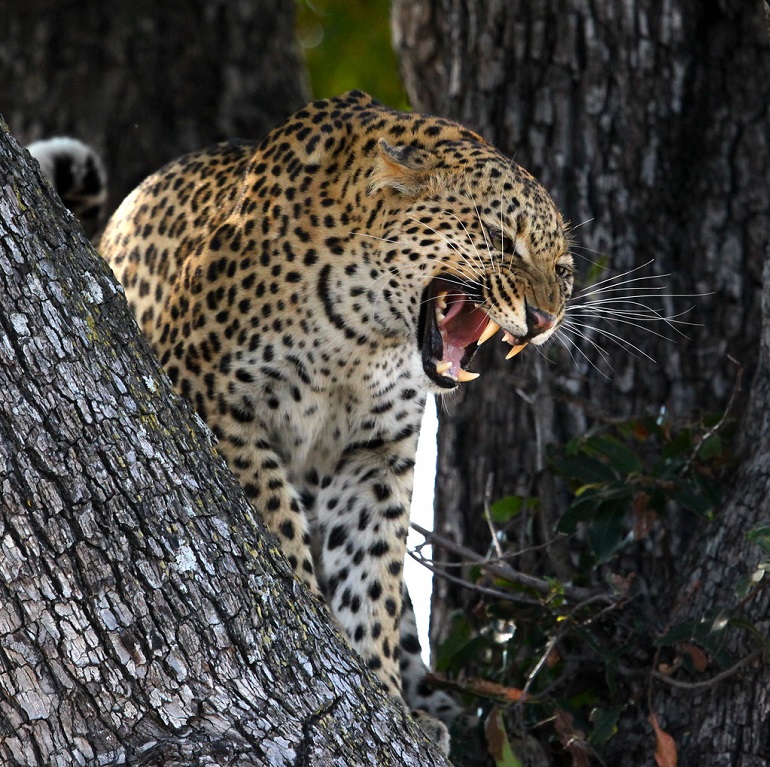
Etymology
Have you ever wondered where animals get their names from? In most cases, animals’ English names come from combinations of words from different languages.
The name leopard comes from either the Old French word leupart or the Middle French word liepart. And you’d think, okay, simple enough, but it doesn’t stop there.
The French words leupart and liepart then come from the Latin word leopardus and the Ancient Greek word λέοπάρδος (leopardos.) But where did the Latin and Ancient Greek languages get the name leopardos? Well, leopardos is likely the combination of the words lion (leōn) and spotted (pardos.)
We commonly know leopards as leopards, but they also go by panther. Panther or Panthera is from the Latin and Ancient Greek languages, and the word refers to a hunting net that the Romans once used to catch wild beasts.
When we combine Panthera with pardos, we are left with the leopards’ scientific name, Panthera pardus.
Natural History
The leopard, along with the snow leopard, is the smallest of all five genus Panthera members. However, their size and weight vary from individual to individual. The average leopard weighs anywhere from 50 to 90 kilograms, and from nose to the tip of their tail, they’re roughly 3 meters long.
The leopard’s magnificent coat acts as camouflage in a huge range of environments, but although it benefits them in the wild, its coat has been its downfall when it comes to humans.
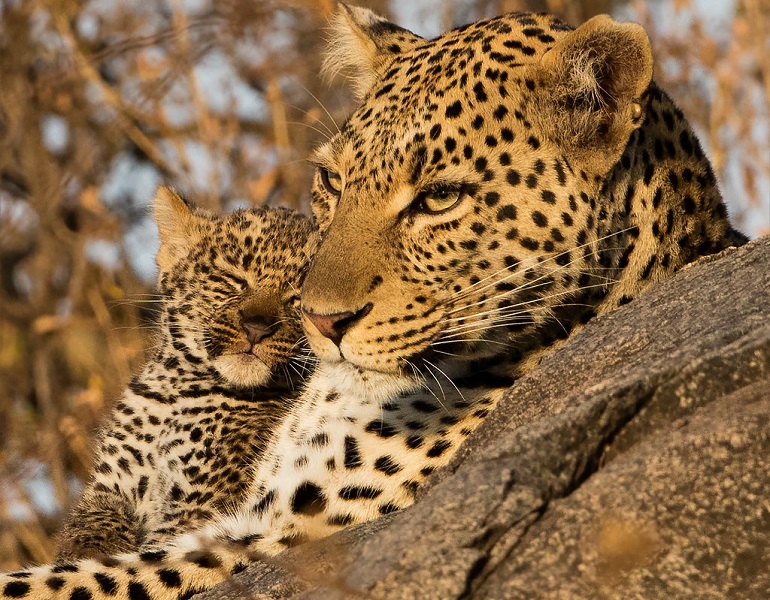
For centuries, humans have hunted leopards for their fur, turning them into coats and rugs simply for aesthetic and status purposes.
In total, there are eight leopard species, with the African leopard being the most common and the Amur leopard is the rarest, with very few remaining in the forests of Russia and China.
What Does A Leopard Look Like? (Physical Appearance)
People often confuse leopards with the cheetah and the jaguar, and at first glance, they really do look quite similar, thanks to their spotted coats.
I’ve only ever seen big cats in the zoo, but I know if I’m not looking at a plaque with the animal’s name on it, I will often confuse the three. When you put the three species side by side, however, you can begin to spot the clear differences in their size, markings, and structures.
The leopard may be the smallest of the genus Panthera species, but by no means does that suggest they are small. Average male leopards can weigh up to 65 kilograms, but they can be significantly larger, with some males weighing up to 90 kilograms depending on age, sex, and location.
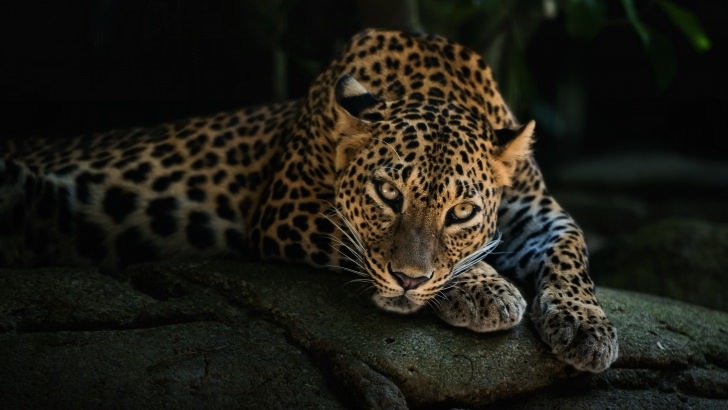
If a leopard were to lie down next to you, from their nose to the end of their tail, it would be nearly twice the size of an average human, so it’s safe to say you wouldn’t want to be up close to one in the wild.
In terms of their height, while standing, a male leopard stands up to 70cm tall at their shoulders, which is slightly taller than a fully-grown German shepherd. Add on the height of their neck and head, and you’ve got a big cat that would have no trouble eating you for breakfast.
Leopards, cheetahs, and jaguars all look fairly similar because of their light yellow-golden fur with spotted markings. But by paying close attention to their spotted markings, you’ll be able to tell the three apart.
Leopards have dark spots called rosettes (rose-shaped), which are notably different from cheetahs, as cheetahs have round or oval spots. Jaguars, on the other hand, have rosette markings too, but jaguars have spots inside their rosettes.
Depending on where a leopard lives, its fur color may be a lighter or darker shade. Leopards in dry regions sport pale cream to light yellow coats, whereas leopards living in forests and mountains have much darker coats that are deep golden in color to help them camouflage.
Each leopard has their own unique rosette pattern, but one thing they all have in common is that the color of their rosettes fades as they get closer to the leopard’s belly and underarms.
Compared to its other big cat cousins, the leopard has relatively short legs, a long body, a large skull, and a long tail that aids in balance.
Leopard Characteristics
Just like you and I, each and every leopard is different, whether that be in weight, color, or height. Many factors play into a leopard’s characteristics, including its habitat, age, and sex.
Size
Like many other cats, a male leopard is typically larger than a female leopard. On average, a male leopard stands 60 to 70 cm tall at the shoulder with a broad head and body length of 90 to 106 cm, and a tail length of 66 to 102 cm, whereas female leopards are 57 to 64 cm tall at their shoulders.
Weight
As with their size, male leopards are also heavier than females, with males typically weighing 35 to 65 kilograms and females weighing 28 to 58 kilograms.
Depending on where a leopard lives and prey availability, some male leopards can reach up to 90 kilograms, with the largest wild leopard ever recorded weighing roughly 96 kilograms.
What Color Is A Leopard?
Leopards who live in drier climates, like those who live in the desert, have lighter fur that is almost cream in color to help them blend in with the light-colored sand. For leopards who live in the mountains or in areas with dense vegetation, their fur is typically darker in color in shades of brown or grey.
So, now that we’ve discussed leopards and their appearance, you’ll know that leopards have rosette spots, right? Did you know that the black panther (no, I’m not talking about Chadwick Boseman or the Marvel franchise) is actually a leopard?
Black panthers, which you probably thought was a separate species in itself, it actually is melanistic leopard.
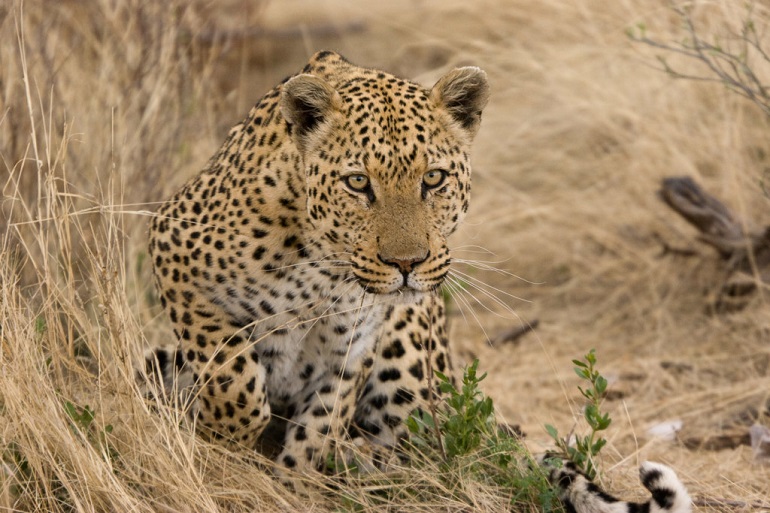
Melanism is an inherited recessive trait that causes dark skin, usually a mixture of black, gray, and blue, hence the leopard’s black or dark fur. Black leopards, or black panthers, if you prefer, mostly live in tropical and subtropical forests and in African mountains.
Lifespan
Wild leopards live up to 15 years in their natural habitat, whereas leopards in captivity can live significantly longer, with an average lifespan of 20 years. The elimination of threats in captivity, along with a constant supply of food, water, and medical attention, sees leopards out-aging their non-captive cousins.
Taxonomy and Evolution
Scientists believe that the leopard diverged 4.35 million years ago in northern Central Asia, with the modern leopard evolving in Africa up to 800,000 years ago.
All over Africa and Asia, paleontologists have found leopard fossils which have helped them map out the leopard’s evolution and its previous habitats.
For example, on the Indonesian island of Sumatra, paleontologists discovered fossilized leopard teeth. They hypothesized that the population became extinct on the island due to a supervolcano eruption, the Toba eruption, that occurred 74,00 years ago.
Being from Europe myself, I would never imagine that many years ago, leopards roamed the continent; I mean, in England especially, we only have one deadly animal, the Adder, so knowing that paleontologists found leopard fossils in Europe is crazy to me.
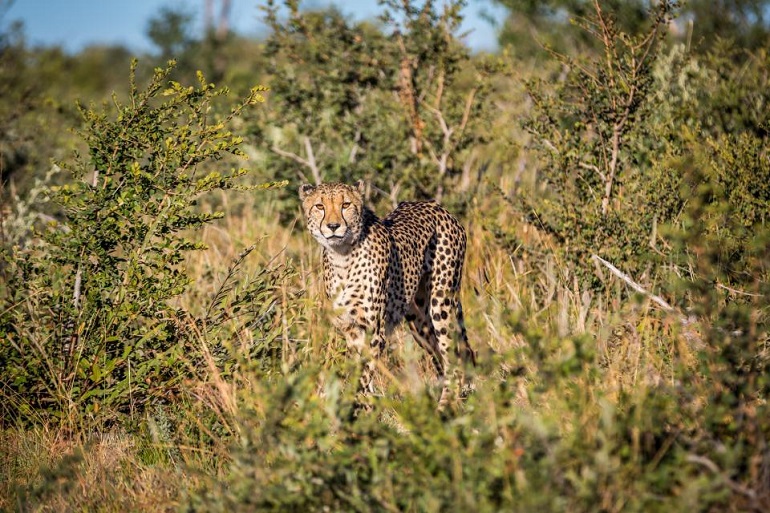
The discovery of the fossils led to biologists proposing four European leopard species; however, these species are now long extinct.
If you were to look at a leopard, you’d think it would be closely related to the jaguar (Panthera onca), but studies into a leopard’s chemical secretions have shown that the leopard is actually more closely related to the lion than any other of the big cat species.
Leopard Subspecies
Over the years, there have been various leopard species that biologists have proposed; the Cat Classification Task Force of the Cat Specialist Group, in 2017, recognized the following eight subspecies as valid.
- African leopard – Native to sub-Saharan Africa.
- Amur leopard – Native to far east Russia and northern China.
- Arabian leopard – Native to the Arabian Peninsula.
- Indian leopard – Native to the Indian subcontinent, southern Tibet, and Myanmar.
- Indochinese leopard – Native to southeast Asia and southern China.
- Javan leopard – Native to the island of Java in Indonesia.
- Persian leopard – Native to eastern Turkey, southern Russia, Iranian Plateau, Hindu Kush, and the Caucasus.
- Sri Lankan leopard – Native to Sri Lanka.
Hybrids
Breeding between different species does occur, the liger (tiger and lion) is a fine example, but in the wild, it is very unlikely. The very first documented case of leopards mating with a lion was in Kolhapur, India, in 1910, when a large leopard mated with a lioness to produce two cubs.
Leopons are said to be spotted like leopards, albeit their spots are smaller, closer together, and brown instead of black. Leopons ultimately share the combined features of a leopard and a lioness, with male leopons having sparse 20 cm long manes. Like the leopard, leopons can climb trees and tend to enjoy the water.
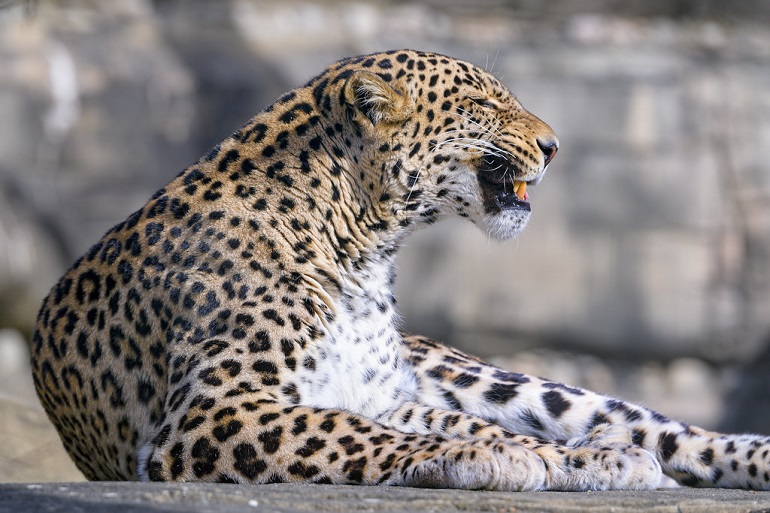
Where Do Leopards Live?
Leopards live in different countries and habitats, depending on the subspecies. We can find leopard populations in Africa, Asia, the Middle East, Russia, Korea, China, Malaysia, and India. Below are the regions in which leopards live:
- Sub-Saharan Africa
- Southwestern and eastern Turkey
- India
- Russia
- Sri Lanka
- Java
- China
- Arabian Peninsula
- Sinai Judean Desert
- The base of the Himalayas
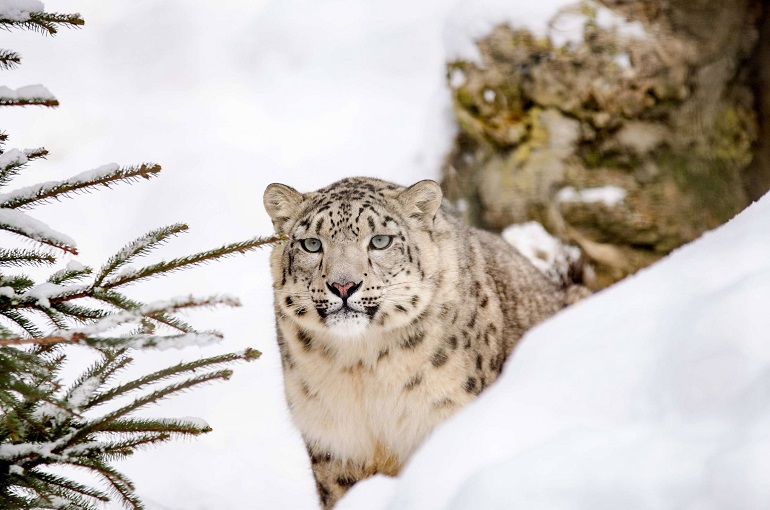
A leopard’s habitat will really range from riverine forests to deserts, grasslands, and mountains. Typically, they like a habitat with dense vegetations that allows them to hide from their prey and other predators.
What Do Leopards Eat?
Leopards are carnivores, and although they feed on animals like antelope, impalas, and gazelles, they’re also partial to other animals like birds, hares, and rodents. Even more surprisingly, baboons, porcupines, fish, and dung beetles may also be on the leopard’s menu.
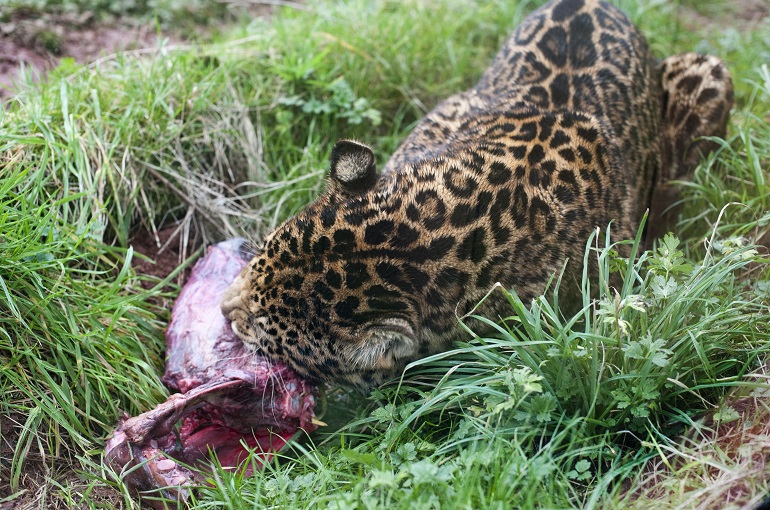
Leopard Population
As with other big cats, leopard populations have been on the decline for years, mainly due to loss of habitat as humans have been taking over their territories, but also due to poaching for leopard fur, which people use for coats, rugs, and ceremonial robes.
Although we don’t know an exact figure on how many leopards are left in the wild, scientists estimate that there are under 250,000 leopards remaining in the wild, with one species, the Amur Leopard contributing less than 100 individuals to that final wild population figure.
Leopard Range And Habitat
In the 1700s, leopards once spanned the entirety of southern Africa, northeast and north Africa, Central Asia to Asia Minor, and from India to China.
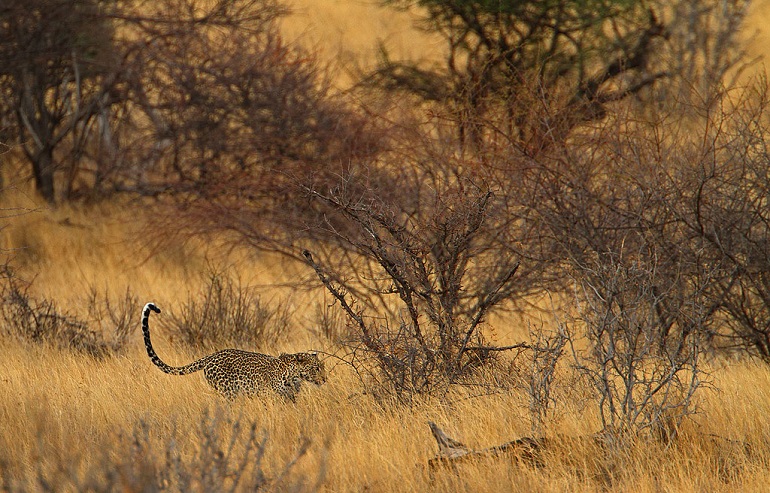
Today, however, leopard populations have dwindled, and the species have lost up to 75% of its historical range, limiting them to sub-Saharan Africa, the Himalayas, Iran, and small pockets throughout Asia.
Behavior And Ecology
Leopards are territorial and solitary animals that only associate with other leopards during the mating season, aside from female leopards who interact with their offspring until adulthood.
For the most part, leopards tend to hunt and be most active at night (nocturnal), resting for the majority of the day and crossing their territory range from dusk to dawn in hopes of finding a meal. African leopards who live in western African forests usually hunt at twilight when their prey is most active.
Although leopards communicate through growls, meows, and purrs, scientists also believe that the white spots on the back of a leopard’s ears, along with the white tip of its tail, are also ways they communicate with one another, as a kind of, follow me gesture.
Now, If you ever see a leopard and think you’ll be safer in a tree, think again. Leopards are excellent climbers who often climb up trees and rest in tree branches. And if you think you can outrun a leopard, then yet again, I’m sorry to say, but you’re wrong, as they can run at over 36 mph and leap over 6 meters.
Social Spacing
Leopards prefer to be alone and will try to limit contact with other leopards as much as possible. The size of a leopard’s home range greatly varies depending on the prey availability and the area’s population.
Generally speaking, however, a male leopard will occupy a home range that overlaps with numerous female ranges. If another leopard of the same sex tries to come close, it will drive the intruder away.
Hunting
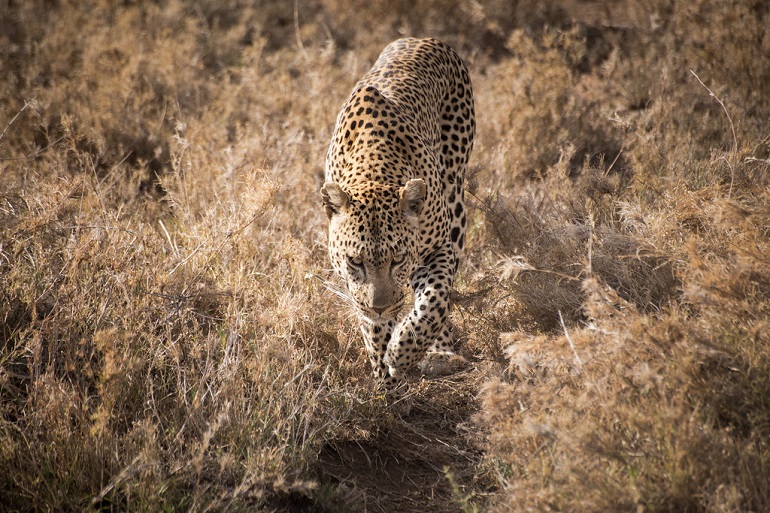
Leopards are expert hunters, and although most leopards will hunt down antelope and gazelle, which are only slightly larger than them, some adults are even known to take down significantly larger prey like a young giraffe and buffalo.
The leopard will rely on its hearing and vision for hunting, preferring to hunt at night so it can stalk and ambush prey, getting as close to them as possible. When a leopard is stalking prey and gets within 5 meters of its target, it will pounce and suffocate the prey by locking its jaws onto the animal’s throat.
Leopard Predators
Although the leopards are fearsome large carnivores in themselves, lions and tigers, given the opportunity, will kill and consume an adult leopard and leopard cubs. Nile crocodiles, mugger crocodiles, and even Burmese pythons will chomp down on an adult leopard if they come into contact.
Leopard Prey
Leopards eat small prey like birds, snakes, mammals, and rodents, to larger animals like giraffes; they aren’t picky.
Leopard Life Cycle
Female leopards become sexually active around three and a half, and once it’s time to mate with a male, they don’t mess around. Mating adult leopards will copulate every 20 minutes for up to five days (yes, you heard, every 20 minutes for 5 days!)
If the mating is a success, a female leopard will have a 100-day gestation period and give birth to two to four leopard cubs at a time.
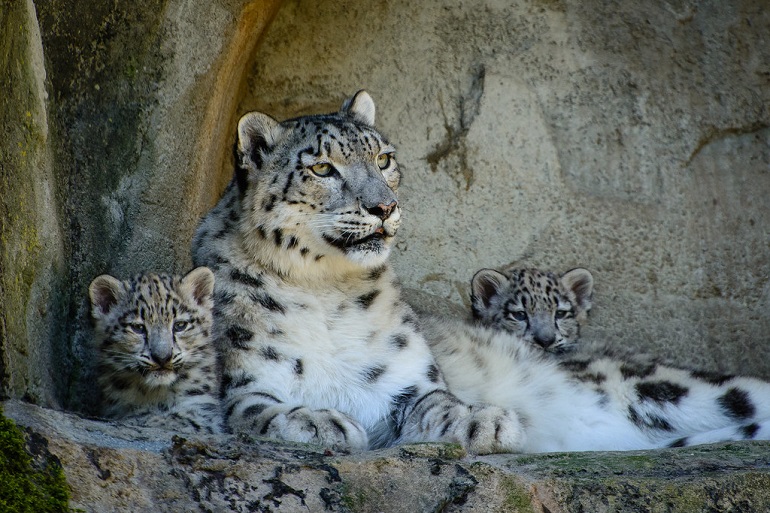
Leopard cubs are born blind with woolly fur in a grayish tone with few visible spots; however, after a few weeks, the baby leopard’s coat will change color, and their spots will become more visible.
Mothers will then hide their cubs for months, moving them to different locations every few days until they’re old enough to play out in the open and learn how to hunt. Typically, cubs will stay with their mother for up to two years before going off and living a solitary life.
Are Leopards Endangered?
Leopards as a species aren’t threatened, but the ICUN Red List has placed them as vulnerable. The Amur leopard and Javan leopard, however, are categorized as critically endangered, and the Sri Lankan and Persian leopards are listed as endangered.
Conservation Status Of Leopards
Although conservation efforts are in place to help boost leopard populations, the leopard as an entire species is vulnerable, with four subspecies being endangered and critically endangered.
Challenges To Leopards
The leopard faces many challenges in the wild, which have ultimately caused their numbers to decline.
Habitat fragmentation has been one of the biggest problems for leopards worldwide. It has not only given them less space to roam around but also limited their natural prey and put them in the path of humans who kill leopards to save their livestock.
Poaching and trophy hunting are two other major factors that have caused a decline in leopard populations, as leopard skin, bones, claws, teeth, and skulls are all sought after in the illegal wildlife trade.
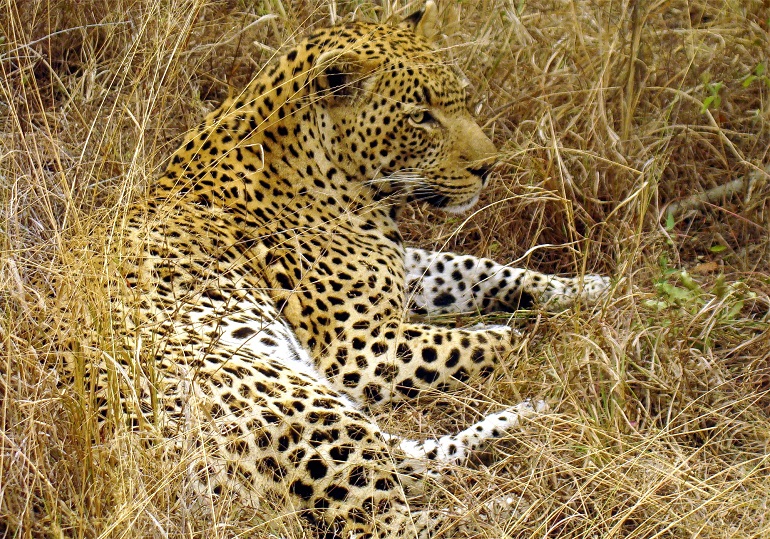
Relations With Humans
I can’t say I’d like to be in the same room or even in the eyesight of a leopard, but there are numerous instances where human settlements have brought our species up close and personal to the incredible large cats.
Human Attacks
Throughout the globe, researchers estimate that there are around 20 leopard attacks each year, which I guess isn’t too many in the grand scheme of things, especially when you compare it to a hippo that causes over 500 deaths annually.
In India, however, over 100 years ago, there were two leopards who struck terror in locals, the Leopard of Rudrapayag, which killed more than 125 people before Jim Corbett, a British hunter, shot the cat dead and the Panar Leopard, who Corbett also shot, who killed more than 400 people.
Corbett believed the leopards became man-eaters because human corpses that were unburied during disease epidemics gave the leopards a taste for human flesh.
Importance In Culture
For centuries leopards have been featured in mythology and art, with ethnic groups even worshiping the leopard, seeing it as a symbol of leadership. The coat of arms of Malawi, Somalia, Benin, the Democratic Republic of Congo, and Gabon, even feature leopards or black panthers.
In Captivity
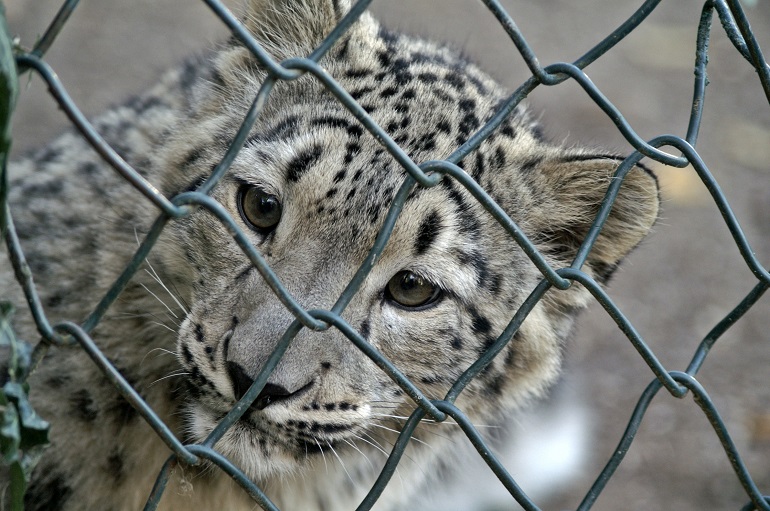
Humans have kept leopards in captivity for centuries, with the Ancient Romans first using them to execute criminals. Before laws were in place to prevent wild animals from being used in circuses, leopards were once the star of the show, performing tricks in front of large audiences.
Today, however, leopards are kept in zoos, and many placed in breeding programs to improve global populations.
FAQs
Where Do Leopards Live In Africa?
In Africa, leopards live in a range of habitats, from deserts in southern Africa to grasslands in East Africa and in arid regions of North Africa to the rainforests of Central Africa.
Are Leopards Carnivores?
Leopards are carnivores as their diet includes only meat.
Are Leopards and Black Panthers The Same?
Yes, leopards and black panthers are the same, as a black panther is simply a leopard with melanism. Melanism, a mutation in a gene, causes the skin and fur of an animal to be black.
What Is The Scientific Name Of the Leopard?
The scientific name for the leopard is Panthera pardus.
Conclusion
Leopards are a magnificent species, and if we don’t start protecting them at all costs, they’ll soon become extinct.
It’s more important than ever that you do your part in preserving the life of leopards, whether by donating to conservation efforts or just raising awareness of the species by discussing it with your friends and family.












